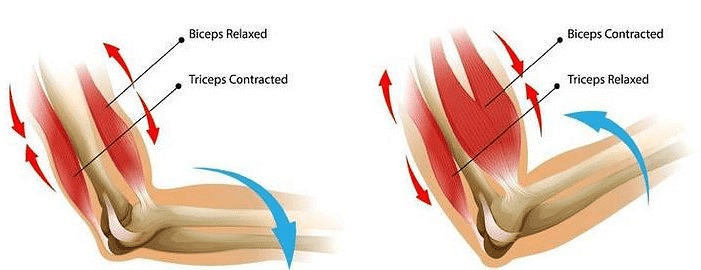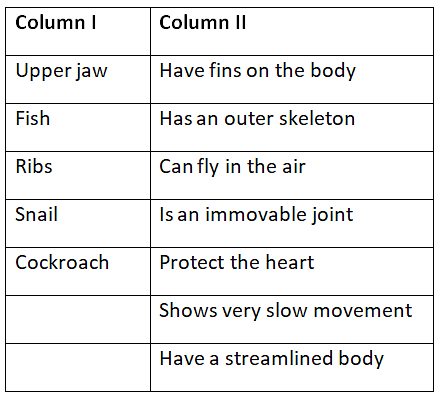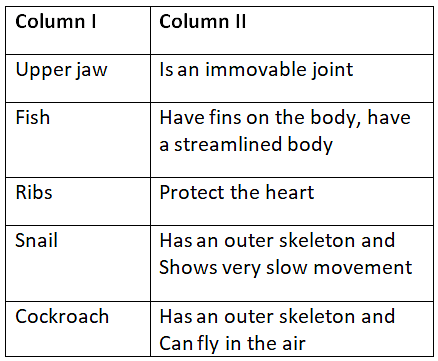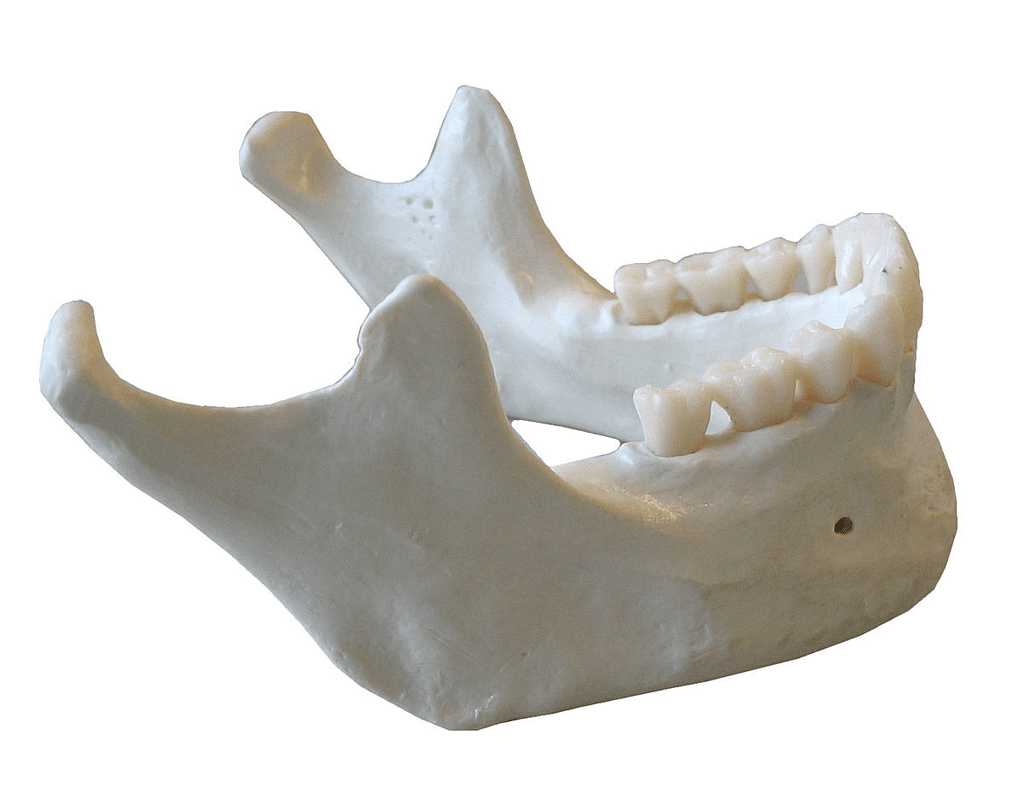NCERT Solutions for Class 6 Science - Body Movements
Q1: Fill in the blanks:
(a) Joints of the bones help in the __________ of the body.
Ans: Movement
(b) A combination of bones and cartilage forms the __________ of the body.
Ans: Skeleton
(c) The bones at the elbow are joined by a __________ joint.
Ans: Hinge joint
(d) The contraction of the __________ pulls the bones during movements.
Ans: Muscles
 Bicep Muscles
Bicep Muscles
Q2: Indicate true (T) and false (F) among the following sentences.
(a) The movement and locomotion of all animals is exactly the same.
Ans: False
(b) The cartilage are harder than bones.
Ans: False
(c) The finger bones do not have joints.
Ans: False
(d) The forearm has two bones.
Ans: True
(e) Cockroaches have an outer skeleton.
Ans: True
Q3: Match the items in Column I with one or more items of Column II.
Ans:
Q4: Answer the following:
(a) What is a ball and socket joint?
Ans: The rounded end of one bone fits into the cavity (hollow space) of the other bone. Such a joint allows movements in all directions, which is called a ball and socket joint.
(b) Which of the skull bones are movable?
Ans: The lower jaw bone or mandible is the only movable bone in the skull.
 Lower Jaw(c) Why can our elbow not move backward?
Lower Jaw(c) Why can our elbow not move backward?
Ans: Elbow joint is composed of the hinge joint. These joints allow movement in one plane and up to 180° only. Hence, we cannot move our elbows backward.
|
100 videos|261 docs|49 tests
|
FAQs on NCERT Solutions for Class 6 Science - Body Movements
| 1. How do muscles help in body movements? |  |
| 2. What are the types of joints in the human body? |  |
| 3. How does the skeletal system support body movements? |  |
| 4. Why is it important to have good posture? |  |
| 5. How can stretching help improve body movements? |  |

|
Explore Courses for Class 6 exam
|

|


















